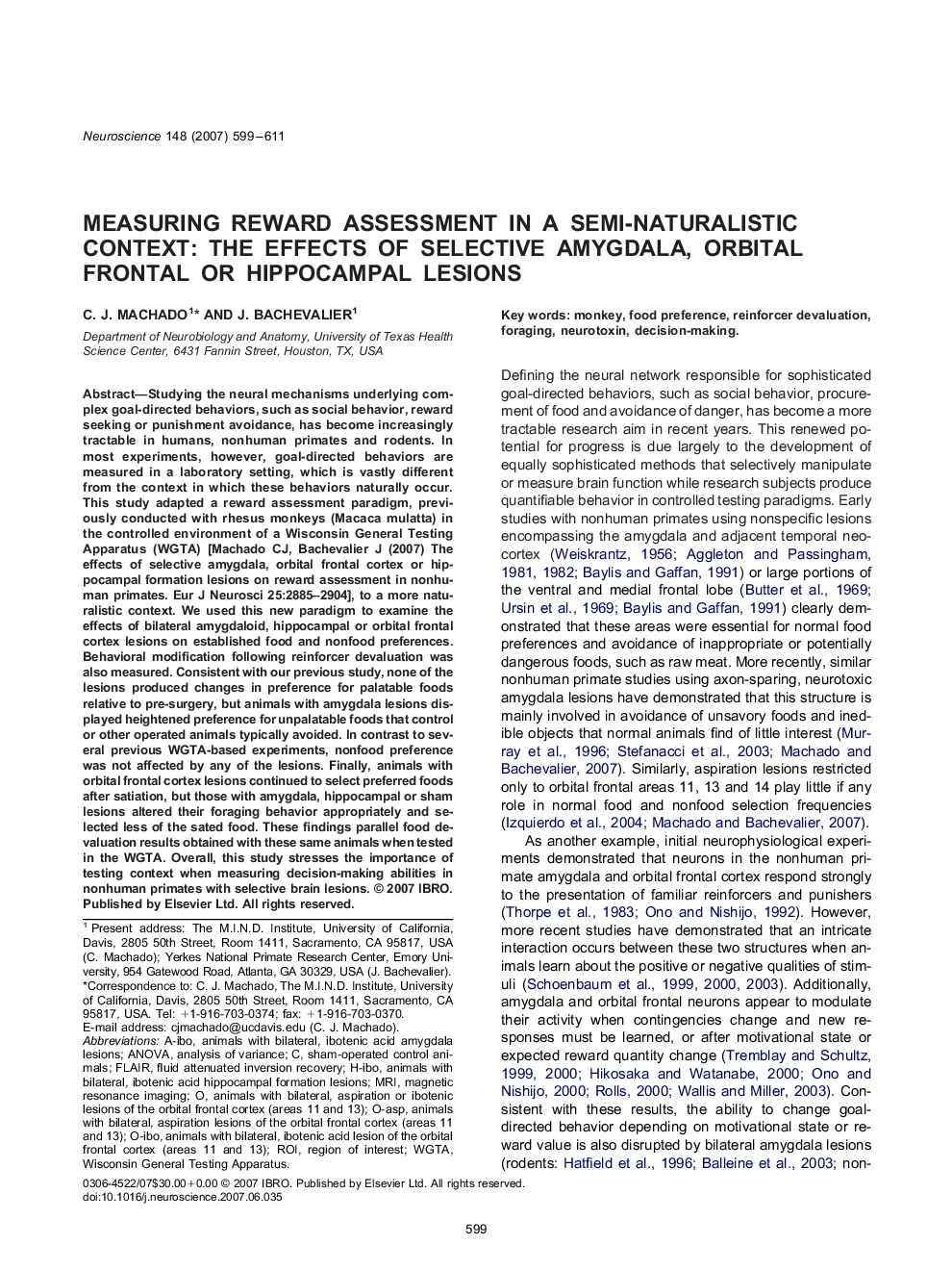| کد مقاله | کد نشریه | سال انتشار | مقاله انگلیسی | نسخه تمام متن |
|---|---|---|---|---|
| 4342569 | 1295875 | 2007 | 13 صفحه PDF | دانلود رایگان |

Studying the neural mechanisms underlying complex goal-directed behaviors, such as social behavior, reward seeking or punishment avoidance, has become increasingly tractable in humans, nonhuman primates and rodents. In most experiments, however, goal-directed behaviors are measured in a laboratory setting, which is vastly different from the context in which these behaviors naturally occur. This study adapted a reward assessment paradigm, previously conducted with rhesus monkeys (Macaca mulatta) in the controlled environment of a Wisconsin General Testing Apparatus (WGTA) [Machado CJ, Bachevalier J (2007) The effects of selective amygdala, orbital frontal cortex or hippocampal formation lesions on reward assessment in nonhuman primates. Eur J Neurosci 25:2885–2904], to a more naturalistic context. We used this new paradigm to examine the effects of bilateral amygdaloid, hippocampal or orbital frontal cortex lesions on established food and nonfood preferences. Behavioral modification following reinforcer devaluation was also measured. Consistent with our previous study, none of the lesions produced changes in preference for palatable foods relative to pre-surgery, but animals with amygdala lesions displayed heightened preference for unpalatable foods that control or other operated animals typically avoided. In contrast to several previous WGTA-based experiments, nonfood preference was not affected by any of the lesions. Finally, animals with orbital frontal cortex lesions continued to select preferred foods after satiation, but those with amygdala, hippocampal or sham lesions altered their foraging behavior appropriately and selected less of the sated food. These findings parallel food devaluation results obtained with these same animals when tested in the WGTA. Overall, this study stresses the importance of testing context when measuring decision-making abilities in nonhuman primates with selective brain lesions.
Journal: Neuroscience - Volume 148, Issue 3, 7 September 2007, Pages 599–611